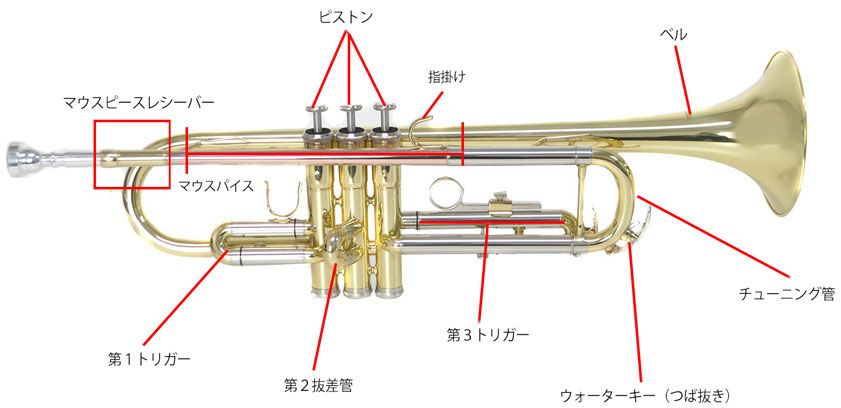Characteristics and origin
In orchestras and brass band, the trumpet is called flower shape. There are many solo parts, and the tone of the trumpet is easy to make. Called a “Rappa” in Japanese slang, it is the most recogizableof wind instruments. The bell extends straight to the spectator seat and is characterized by a bright and colorful tone.
The origin of trumpet has many theories such as wood, clay and human bones, and it is believed that it has been used for ceremonies in a wide range of areas. It is also used for instructions and cues during marching, and since about the 17th century music has been played together with other instruments. The present trumpet that we usually see is one with a piston (valve) established in the 19th century.
The trumpet changes the pitch by the combination of pushing pistons. The three (or four) pistons have the role of adjusting the length of the tube through which air passes. For example, "de so de" is a sound that can be emitted with the same combination of pistons. This is changing the usage of the lips and changing the pitch. You can play various pitches by loosening or tightening the lips. Trumpet mouthpieces are small and made of brass and come in many varieties. The ease of playing changes by choosing a mouthpiece that matches the tone and feel of the wind.
Name of each part














